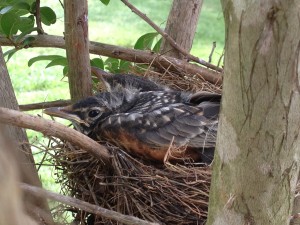
Are you looking for an exciting and beautiful destination to journey to for the start of the new year? Look no further than the Great Smoky Mountains National Park! These mountain peaks are stunning at any time of year, including winter.
The Great Smoky Mountains National Park is the #1-visited national park in the U.S with more than 11 million visitors every year. But most of these visitors come during the warmer months. during the winter, the crowds have thinned down. It’s the perfect time to take a breath and enjoy the amazing scenery.
Camping
If you are a fan of camping, the Great Smoky Mountains offer a wide variety of options. Just be sure to read over the rules and instructions before you camp. If you want to bring a large group, just make sure to make your own reservations ahead of time and prepare accordingly. Remember, be wary of bears!
Frontcountry Camping
There are ten frontcountry campgrounds. These are campgrounds that can be reached by car. Frontcountry campgrounds usually have running water and restroom facilities. Some even have showers. People may camp in tents, camping trailers, or RVs.
The park has two frontcountry campgrounds that are open all year. These include Cades Cove and Smokemont Campgrounds. There are many campsites at each one. The Smokemont Campground has 142 campsites, while Cades Cove has 159. Be sure to check the park websites, however, as some of the campsites are closed in the winter.
Backcountry Camping
If you prefer backcountry camping, you’ll be glad to know that it’s also allowed. Backcountry campers crave the solitude and adventure of going off on their own into more remote areas. These campers are roughing it; there aren’t any conveniences such as running water, restrooms, or showers where they camp. If you’re backcountry camping, you may still find some established campsites you can use. These campsites are a good option, as they can help you limit your impact in the wilderness.
Scenic Drives
One of the main attractions in the Great Smoky Mountains National Park are the scenic drives. Visitors can take a driving tour of the park with 384 miles of road to choose from. Most of the roads are paved, although there are some gravel roads as well. Be sure to note when the roads are open; some are closed during the winter.
Newfound Gap Road (Highway 441)
Newfound Gap Road is open all year, weather permitting. This 33-mile-long road crosses a point over 5,000 feet high – the lowest pass through the Great Smoky Mountains. You can begin the drive either from Cherokee, North Carolina or Gatlinburg, Tennessee. The road takes travelers approximately 3,000 feet higher in elevation through a variety of ecosystems. There are plenty of pullouts, or areas where the road widens for visitors to pull off and enjoy the spectacular mountain views. You can also find yourself on the Road to Nowhere, a short drive that will lead you to an exciting walk through an old, abandoned tunnel.
Cades Cove Loop Road
This 11-mile drive takes visitors through a valley surrounded by mountains. Cades Cove Loop Road is one of the most popular destinations in the park. The road may be used for a peaceful driving tour as well as bicycling. Throughout the Cove you will see historic buildings, including rustic log homes, churches, an old mill, and a cantilever barn.
Little River Road
Little River Road is an 18-mile stretch of road running along the Little River. It was built an old railroad bed once used by the Little River Lumber Company. It is also one of the ways to reach Cades Cove.
Hiking
Hiking is an activity that can be enjoyed in any season, including winter. In the Smoky Mountains, you can find a trail to explore no matter your level of experience. Just remember to layer up on your clothing; you can always shed some layers if you need to as you go. Below are a few favorites to check out:
Alum Cave Trail
This trail offers an amazing adventure, especially in winter. It is a challenging trail, however, as the elevation increases about 1,200 feet throughout. The hike spans 2.3 miles through old-growth hardwood forests, culminating at the Alum Cave Bluffs. Wintery conditions can create breathtaking views of icicle formations.
Laurel Falls Trail
For a shorter, easier hike, consider the Laurel Falls Trail. This paved 2.5-mile out-and-back trail is ideal for hikers of all skill levels. The trail ends at the 80-foot-high Laurel Falls, named after the beautiful mountain laurel that grows in the woods.
Metcalf Bottoms Trail
If you prefer an easy and scenic hike, the Metcalf Bottoms Trail is the ideal choice. With a mere 187 feet of elevation gain over 1.5 miles, this trail is the easiest on our list. During winter, it transforms into a magical journey into the historic Little Greenbrier Community, resembling a snow-covered ghost town with its old schoolhouse, cabin, and cemetery.
Rainbow Falls
This is a more challenging trail with a roundtrip distance of 5.4 miles. The terrain is rocky, and the hike is more demanding. But for those up to the challenge, it’s also incredibly rewarding. Winter hikers will be able to take in the amazing ice formations surrounding the falls.
Trillium Gap Trail
Located in Tennessee, the Trillium Gap Trail is an 8.9-mile out-and-back adventure. Begin your hike southeast of Gatlinburg, off Roaring Fork Motor Nature Trail. The initial 1.5 miles coincide with the Grotto Falls Trail, leading you through the forest to a 25-foot waterfall. As you continue upward to Trillium Gap, expect a significant elevation gain of over 1,200 feet. The panoramic views from the mountain’s end make the challenging climb worthwhile.
Wildlife Viewing
Don’t forget to look for wildlife! Whether you’re riding or hiking, you have a good chance of seeing some of the park’s native inhabitants. Wildlife is often easier to spot in the park during the winter since the vegetation is much thinner. Look for some of these animals as you make your way through the mountains:
Wild Turkeys
Wild turkeys are the largest birds in the park. Turkey can fly short distances, and they perch in trees at night to sleep. They are most active early in the morning and in the early afternoon.
White Tailed Deer
These deer live throughout the park, but they are easiest to spot in open areas. Look for them in places like Cades Cove and the Cataloochee Valley.
Raccoons
If you’re camping, you may find one of these curious animals near your site. Raccoons are resourceful, so follow camping guidelines to keep your food and other supplies secure.
Black bears
Black bears escape to their dens to get out of the cold winter weather. But they don’t actually hibernate. Keep an eye out for them, especially if the weather is warm. They may leave their dens for short periods of time.
Load up the car, the kids, and all the gear for a winter adventure in the Great Smoky Mountain National Park. This stunning location will leave you talking about it long after the weather warms up!
Looking for more outdoor resources? Sign up for our free newsletter! You’ll receive four issues a year full of seasonal activities and opportunities to enjoy as you head outside!










